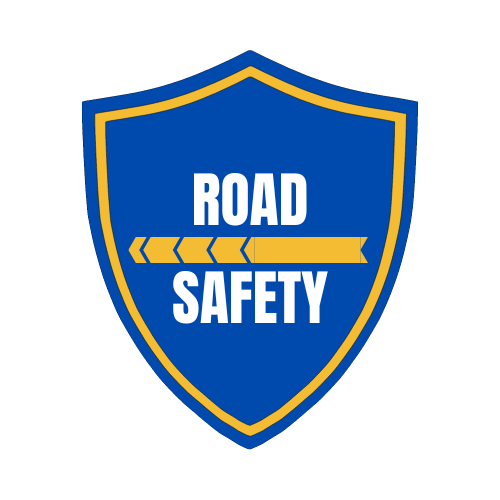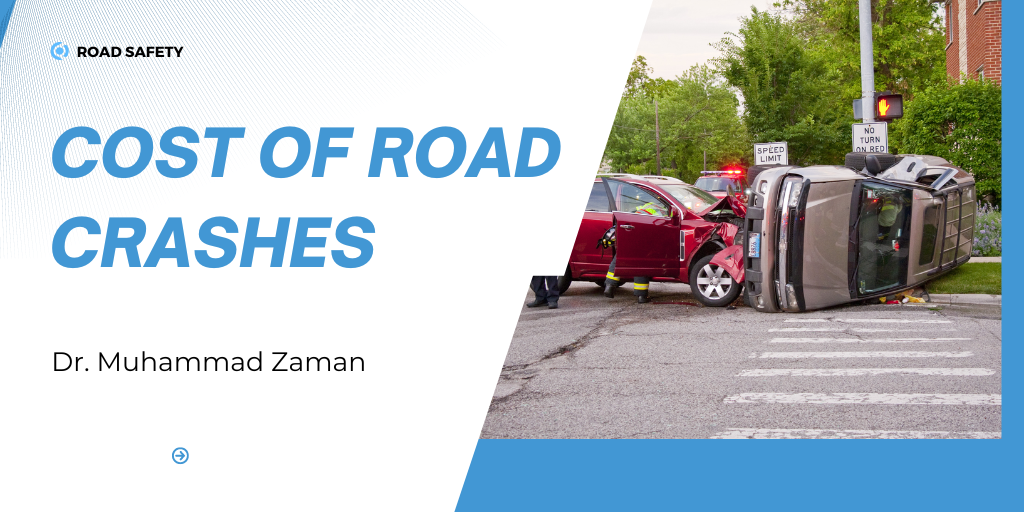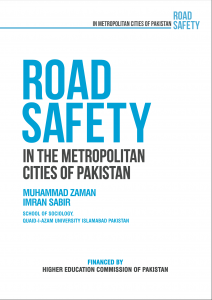Pakistan is wasting about nine billion dollars every year; that is about 1,400 billion rupees per year as per a 2018 report of the ministry of communication. This money is wasted on repairing of vehicles, medical treatment of the injured, losing the market value of the vehicle and opportunity costs after a road crash. Nine billion dollars is a huge amount, higher than the national defence budget. This amount may increase in future.
Pakistan is about to receive six billion dollars from the IMF for the next thirty-nine months. If we multiply nine into three, the amount would be twenty-seven billion, and Pakistan is only getting six billion dollars from the IMF. Every year, we are wasting nine billion dollars, and what we are receiving from the IMF in terms of loan on interest in over three years, it is very little as compared to the level of the wastage of money in road crashes.
Starting from two wheels to four wheels, almost 15 million vehicles are now on roads. They would reach 18 million in 2030. If it could not be channelised and managed in a systematic way, we would have to face more deaths and more crashes. Pakistan has approximately 27,582 deaths every year, and about 50,000 people are disabled and injured. It is most alarming that every few minutes, somebody is injured, disabled or dead in a road accident in Pakistan.
There is also a need to introduce a centralised public transport system in order to provide safe and secure transportation in urban spaces
How to overcome all these challenges, is there any way to change the sitaution? First, the money wasted on roads can be saved. Government should take an initiative to update the legislation, which should focus on standards of vehicles and their maintenance, proper road infrastructure and maintainenceof roads. Then this money can be saved.
The second step can be training and licensing of every driver. Pakistan has less than five percent licence-holders. Most of them learn to drive from their friends and family and not from authorised driving centres. The rest of the ninety-five percent of people driving without a licence don’t know what to do and what not to on roads.
The third component could be taxation. We have a huge number of vehicles but taxation is limited on the usage of vehicles. The current government has taken an effective measure to increase the taxation on vehicles, which is, in my view, a good step. Taxation should also be imposed on discharging carbon emissions in order to discourage the high volume of road congestions. There is also a need to introduce a centralised public transport system in order to provide safe and secure transportation in urban spaces. The same can also be provided in towns and villages.
The fourth step can the electronic surveillance. It can be privatised and may lead to effective policing. This system will sensitise the people who come on roads to be vigilant about careful driving and secure lives and resources. Drivers must be sensitised that while driving they are being watched and monitored. If they violate any traffic rule, they must be penalised with a heavy fine. That will also generate extra money for the national exchequer.
An effective monitoring system will also be helpful for employment-generation for young people, which is also a part of the agenda of the current ruling party.
Thousands of young people can be engaged to secure the roads. Electronic vigilance and effective policing can secure roads as well as generate money. This money can help in reducing the dependency of the country on international money lenders.
If we want safe roads in our country, we should evolve a system of securing and maintenance of roads in order to reduce the risk factor and secure the lives of people.



Is there a way to overcome the risk of a major accident in traffic?